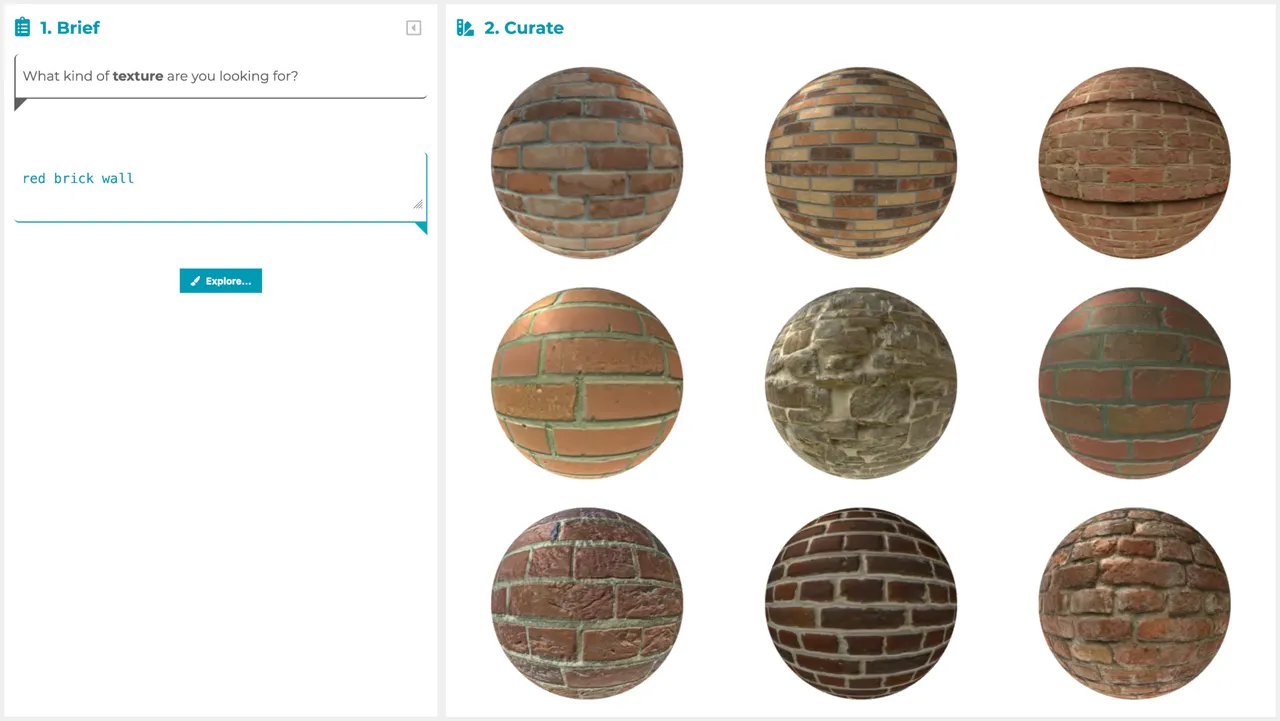It's part of our jobs as artists, designers, and creatives to think about the future and the impact of our work. There's no bigger elephant in the room than the deployment of Artificial Intelligence 1. Some of us are optimistic; a few are pessimistic; nobody really knows for sure.
When we were experimenting with the idea of texture.design, one prototype in particular kept coming back over and over. We had a love/hate relationship with that prototype, and it relates to this elephant. But first, let's start with some philosophy...
Autonomous Agents
In the field of AI, many futurists speculate about "The Singularity": a hypothetical point in time at which technological growth becomes uncontrollable and irreversible. If this was to happen because of AI reaching a tipping point, the impact on business — including the creative industries — would be felt very quickly.
“If a Singularity event occurs, it would be the second one — only this time because of AI.”
But this would be the second time it happens.
According to Prof. David Runciman, author and professor of politics at Cambridge University, we already witnessed the first Singularity with organizations (or "autonomous agents" as he calls them) like corporations and governments. Runciman argues these organizations have had incredible growth over the past centuries, can no longer be controlled by any individual, and their progress would be difficult to reverse. They fit the same criteria!
Thinking about "Artificial Intelligence" in this way helps us predict how things are going to evolve — whether or not there is a tipping point. AI is simply the next iteration of "Autonomous Agents" except with technology based on computers.
A Thought Experiment
Imagine we had a powerful machine with AI that was tasked with producing textures for us.
How would we interact with it?
We'd tell it or show it the kind of texture we want.
The machine would give us back some variations that match.
We'd look at the options and adjust our original request.
The machine would further refine its suggestions.
We repeat this until we're fully satisfied with the result.
This is an iterative design process — which should be very familiar! There are many organizations, acting as Autonomous Agents, that already provide these kinds of services today. The way we interact with them is also a design process.
Creative Services
In practice, anyone who wants a texture or material for their creative project will increasingly go to the following places first:
Stock Photography Supplier — Browse through a large space of textures to find the best one, using the user interface or text search, usually a website.
Media Outsourcing Agency — Request a texture by describing it with text or examples, then get the result back a bit later, often via email.
From a functional perspective, these operate in the exact same way as an Artificial Intelligence would: we provide a brief as an input to the service (one or more), and we get our texture as an output (one or more). In fact, we could have already interacted with a powerful AI without knowing it ;-)
This conceptual and functional similarity explains why many of the prototypes for texture.design (for example the screenshot above) kept coming back to Stock Photography! It also explains our inside jokes about building a fully automated outsourcing agency...

Screenshot 1: An ealry prototype of texture.design where you type in your brief and get some suggestions for materials in return. Those textures were created by members of the community and released under CC0 license, but they could all be generated on-the-fly and you wouldn't even see the difference!
The Implications
“The deployment of AI into creative industries will be a gradual evolution of existing services.”
There won't be a precise moment in time where Artificial Intelligence triumpantly takes over creative industries. It will happen as a continuous process as it evolves & upgrades services that are already being used by millions — including organizations that provide textures and materials.
What can we learn from this thought experiment? We can classify progress into two areas:
Internal — What kind of process do organizations use internally to produce its outputs.
External — How does the organization interact and communicate with others externally.
Many different technologies will come into play in both areas: new algorithms, new interactions, new models, new workflows. Both components will evolve hand in hand as time goes by, and AI will play a role in many places.
Over the next blog posts, we'll see what this means in practice.
TL;DR. If powerful AI was deployed into creative industries, it would act identically (conceptually and functionally) to outsourcing agencies and stock photography suppliers. We can use the similarities to help a better system evolve!
- 1
-
Not just AI-enabled image filters, but powerful systems able to understand and generate things.
- 2
-
Teaser photo by Kaffeebart on Unsplash.